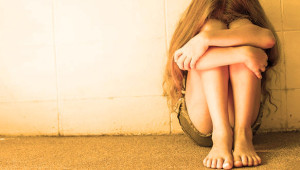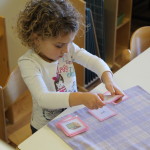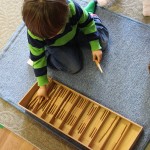
I have been wanting to talk about child poverty for a while, but I also wanted to make sure that the lesson would be a child friendly and hopeful experience. Children can be the most sympathetic and understanding beings when you start teaching them about the world around them. Needless to say, the lesson went well, and they continue to ask hopeful questions on the topic.
I worked my way up to the topic by starting with a different topic in which I asked each child what they want to be when they grew up. Then I asked each child, what do they think they will need to do in life in order to be what they want to be. They all had some cute and simple answers like, “You need to wear the costume,” (as in, the fire fighter needs to put on a “costume”). Then I opened up into a slide show of stock images to give a glimpse into how much work, schooling, and discipline that people need to practice in order to reach these goals. Afterwards, we watched a video on children who truly want to go to school, but due to their situation, they cannot attend as they are struggling to get by, living in poverty. We teachers were touched by the thoughtful faces and comments of our little students during and after watching the first video below. They all sat silently or shared true concern, asking if the children in the video are “better now.” At the end of the day, when I asked each child what they were thankful for, they had more meaning in their responses, saying comments like, “I am thankful that my mom and dad help me go to school.”
Of course, we need to offer hope to our students when sharing about children in poverty as this is a very sensitive topic, so we get into talking about ways that nonprofit organizations and volunteers help those children and other people in poverty. This eventually led into the lesson on hope. We talked about the meaning and asked each child to share something that they were hopeful for.
The best videos I could find out there include videos posted by Good Neighbors, a nonprofit organization that gave 76% profit directly to children’s education and community development projects in 2012. Note: I skipped past the first minute or so of the first video to avoid the animal carcasses (I know, terrible), as I was concerned it was a little much. I show brief from the video, pausing it to explain more about what is happening. I am only choosing videos where children of poverty are actually being helped, and I don’t mention that there are so may children being neglected. It is more important to leave on a positive note at this age with what our children are capable of handling. We always want them to feel empathetic and hopeful.
Child Poverty Video by Good Neighbors – The first video I like to show, minus the first scene.
Child Sponsorship Video – This video shows the nonprofit organization helping children.
Water For Life Video –This video shows Good Neighbors bringing water to a community. We watched this after a lesson on saving water.
So, all in all, the lesson was a success and our students are very interested in learning more. Montessori taught us that children could handle the truth, as long as we offer a glimpse of hope, a way to build empathy. It’s great to see our little ones talking so thoughtfully as they all seem a little bit more thankful and aware of the world around them.
~Angelique



